Dragon fruit, also known as pitaya, is one of the most exotic and eye-catching fruits you can grow right at home. Its vibrant pink skin, speckled white or red flesh, and refreshing taste make it a favorite among tropical fruit lovers. The best part is, you don’t need a big garden or farmland to grow it. Even if you live in a city apartment, you can cultivate this beautiful cactus on your balcony with a bit of patience and the right care.
Growing dragon fruit in a balcony garden is not only rewarding but also surprisingly easy once you understand its needs. Here’s a simple, step-by-step guide to help you grow and enjoy fresh dragon fruit right from your own home.
Understanding the Dragon Fruit Plant
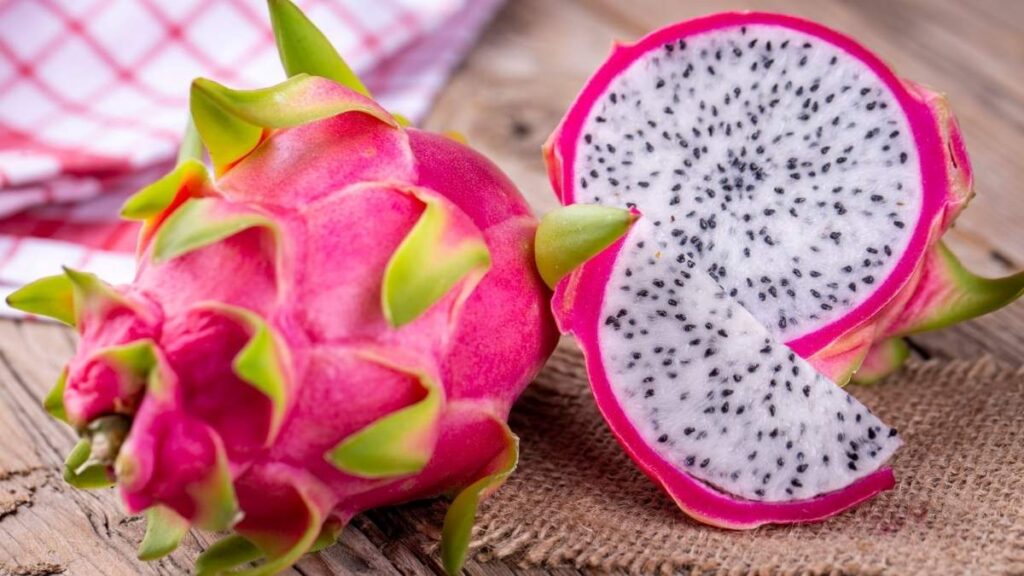
Dragon fruit belongs to the cactus family, which means it loves sunlight and doesn’t require too much water. The plant grows on climbing cactus vines that can reach several meters if supported properly. It produces large, fragrant flowers that bloom at night, followed by the distinctive fruits.
There are several varieties of dragon fruit, such as the white-fleshed Hylocereus undatus, red-fleshed Hylocereus costaricensis, and yellow-skinned Selenicereus megalanthus. For balcony gardening, any of these can work well, though the red and white varieties are the most common and easiest to find.
Choosing the Right Container
Since you’re growing dragon fruit on a balcony, selecting the right pot is crucial. The container should be large enough to support the root system and heavy enough to keep the plant stable as it grows upward. A pot about 20–24 inches in diameter and 10–12 inches deep is ideal. Make sure the pot has proper drainage holes, as stagnant water can lead to root rot.
Use a sturdy pot made of clay or thick plastic that can withstand weight and sun exposure. Dragon fruit plants grow tall and heavy, especially when fruiting, so the container must be strong enough to handle that weight.
Preparing the Perfect Soil Mix
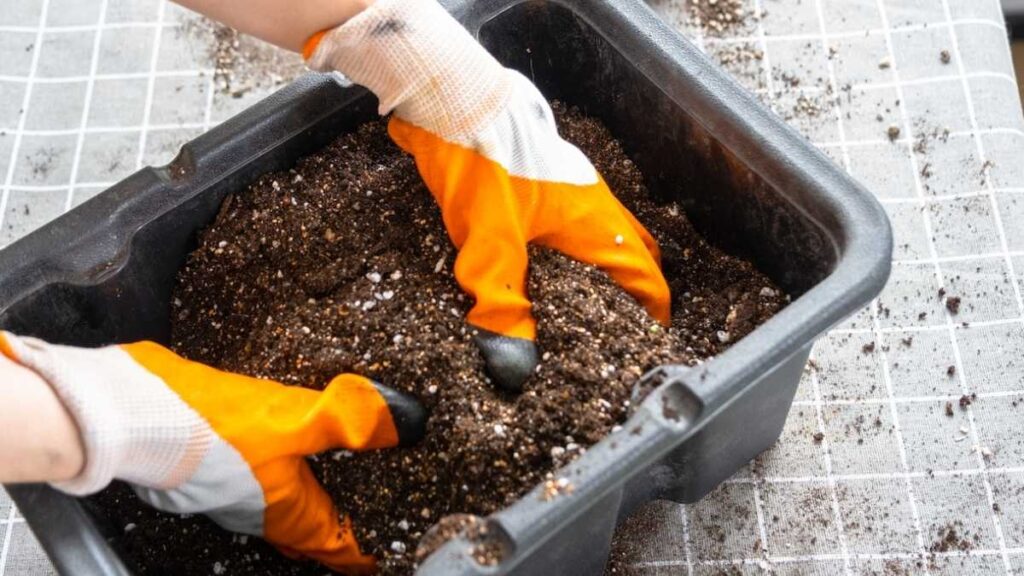
Dragon fruit thrives in well-draining, slightly acidic soil. Since it’s a cactus, it doesn’t like soggy roots. You can make a good mix by combining cactus soil with a bit of organic compost and sand or perlite for better drainage.
A recommended soil mix can include two parts garden soil, one part sand, and one part compost or coco peat. This blend ensures the plant gets enough nutrients while preventing waterlogging. You can also add a handful of crushed eggshells for extra calcium, which helps the plant stay strong and healthy.
Propagation: Growing from Cuttings
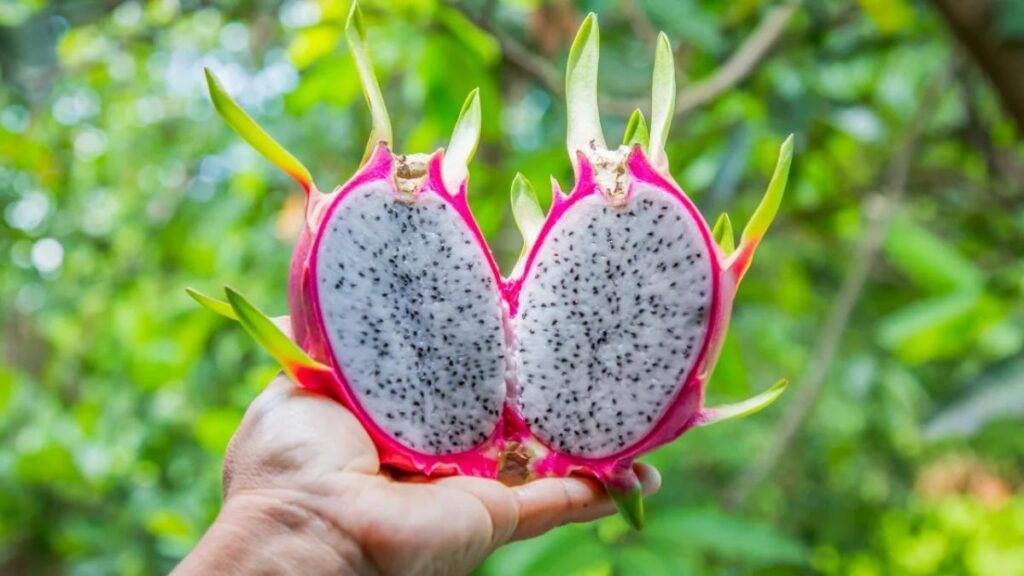
The easiest way to start a dragon fruit plant is from stem cuttings rather than seeds. You can get cuttings from a mature plant or buy them from a local nursery.
Cut a healthy stem about 6–8 inches long and let it dry for two to three days in a shaded area. This drying period allows the cut end to callous, reducing the risk of rot when planted. Once ready, plant the cutting about two inches deep into the prepared potting mix. Water lightly and place the pot in a sunny spot on your balcony.
In a few weeks, you’ll notice new growth, which means the cutting has successfully rooted and started to develop into a full plant.
Providing Support for Growth
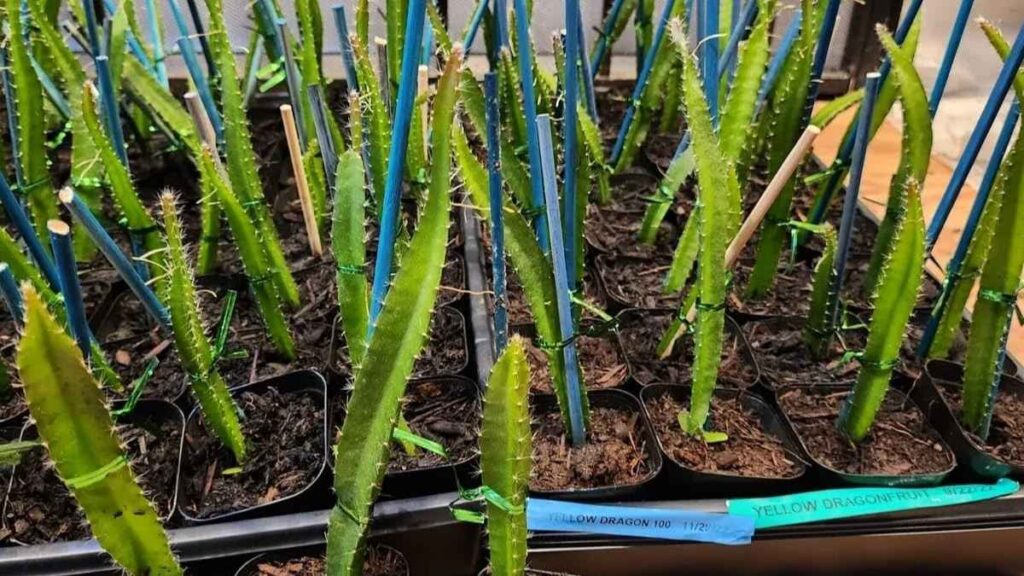
Dragon fruit plants are climbers, so they need a strong support structure as they grow. You can use a wooden or metal pole, a trellis, or even bamboo sticks. As the plant matures, it will grow aerial roots that attach to the support, helping it climb upward.
Tie the plant gently with soft ties or cloth strips to guide it as it grows. Avoid using wire or anything too tight, as it can damage the plant’s delicate stems.
Watering and Sunlight Requirements
Dragon fruit loves sunlight. Place your pot in a location where the plant receives at least six to eight hours of direct sunlight every day. Balconies with bright light are perfect. If your space doesn’t get full sun, you can rotate the pot every few days to ensure even light exposure.
When it comes to watering, less is more. Water the plant only when the top two inches of soil feel dry. Overwatering can cause the roots to rot, especially in humid climates. During the growing season, you may water it twice a week, but reduce it during cooler months.
Fertilizing the Plant
To help your dragon fruit thrive, feed it with a balanced organic fertilizer every month during the growing season. Compost, cow dung, or seaweed extract works well. Avoid over-fertilizing, as this can lead to excessive leafy growth with fewer fruits.
Once the plant starts flowering, switch to a fertilizer high in phosphorus and potassium to encourage fruit development. Always remember to water the plant after fertilizing to help nutrients absorb properly.
Flowering and Pollination
Dragon fruit plants usually take about a year or more to flower if grown from cuttings. The flowers are large, white, and fragrant, blooming at night and lasting only until early morning. For balcony gardeners, manual pollination may be necessary, especially if natural pollinators like bats or moths aren’t around.
You can use a small paintbrush or cotton swab to transfer pollen from one flower to another. This simple step increases your chances of successful fruiting. Within a few weeks, you’ll notice small green fruits forming, which will gradually ripen into vibrant dragon fruits.
Harvesting the Fruits
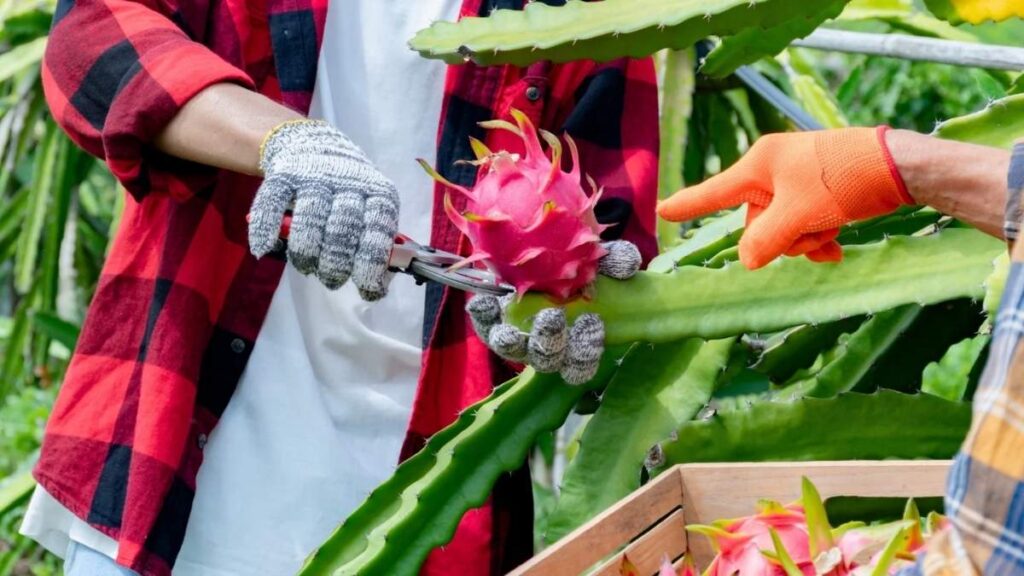
Dragon fruits are ready to harvest when their skin turns bright pink or red, and the small scales on the surface start to dry slightly. Gently twist or cut the fruit from the stem using a sharp knife. Freshly harvested dragon fruit can last for about a week at room temperature or longer if refrigerated.
The first harvest might be small, but as the plant matures, it can produce multiple flushes of fruit every year. With proper care, a single plant can last and bear fruit for many years.
Tips for Balcony Gardeners
If your balcony gets too windy, protect your dragon fruit plant by placing it near a wall or railing. You can also group it with other potted plants to create a natural windbreak. During extreme heat, provide partial shade to prevent sunburn on the stems.
Keep an eye out for pests like ants or aphids. A simple spray of neem oil or soap water once in a while keeps them away. Regular pruning also helps the plant stay healthy and encourages better fruiting.
Final Thoughts
Growing dragon fruit in your balcony garden is not only fun but also adds a touch of tropical charm to your space. With its stunning appearance, minimal maintenance, and delicious rewards, it’s a perfect choice for urban gardeners looking to add something unique to their collection.
All you need is patience, sunlight, and a little care, and soon your balcony will be home to one of nature’s most beautiful and tasty fruits. The joy of harvesting your own dragon fruit is truly unmatched and it all starts with a single cutting and a sunny corner of your home.




From dragon fruit inside if we remove shall it grow,
Black seeds if we put in the pot shall it grow